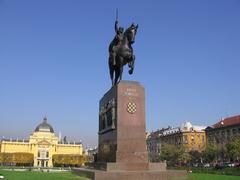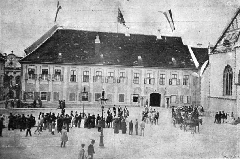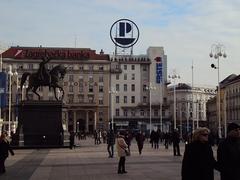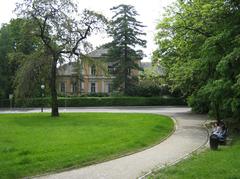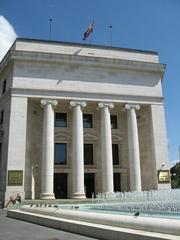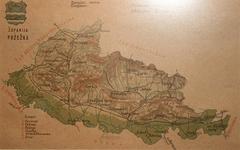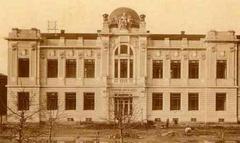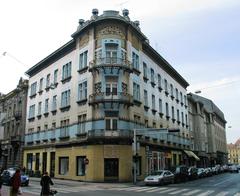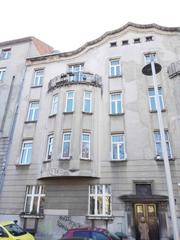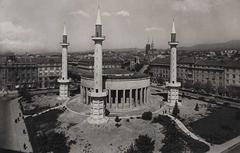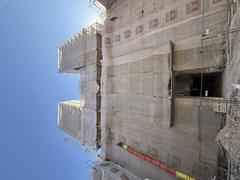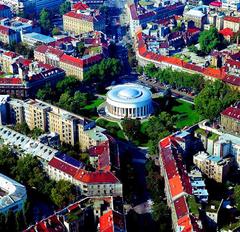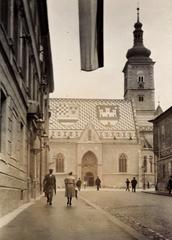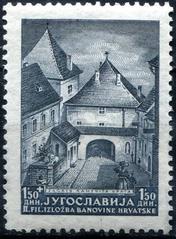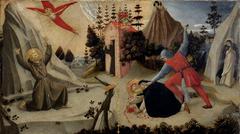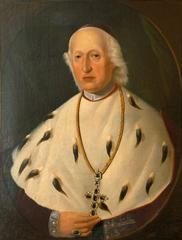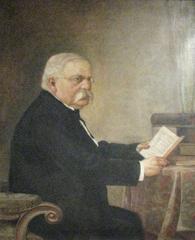
Visiting Susedgrad: Hours, Tickets, and Historical Sites in Zagreb
Published Date: 17/08/2024
Introduction
Nestled on the far-western hill of Mount Medvednica, Susedgrad Castle in Zagreb, Croatia, is a captivating medieval fortress that offers a window into Croatia’s rich past. Its strategic location near the confluence of the Krapina and Sava rivers historically provided control over significant land and waterways, suggesting the area has been settled since antiquity (Sygic Travel). Constructed in the second half of the 13th century, Susedgrad was initially owned by the Cistercian order and later became a royal possession, playing a crucial role in medieval Slavonia (Wikipedia). The fortress is notable for its involvement in the Great Peasant Revolt of 1573, ignited by the cruel treatment of serfs by its owner, Franjo Tahi (Total Croatia News). Despite its decline and abandonment in the early 17th century, Susedgrad remains a protected cultural heritage site, attracting visitors with its rich history and scenic views (PP Medvednica). This comprehensive guide provides detailed insights into the historical significance of Susedgrad, practical visiting tips, and highlights the cultural and archaeological discoveries that make this fortress a must-visit destination.
Table of Contents
- Introduction
- Rich History and Visiting Tips for Susedgrad Fortress
- Top Visitor Tips for Exploring Susedgrad Castle
- Conclusion
- References
Rich History and Visiting Tips for Susedgrad Fortress
Early Beginnings and Strategic Importance
Susedgrad, also known as Sused, is strategically positioned near the confluence of the Krapina and Sava rivers, which historically provided control over significant land and waterways. Archaeological and paleontological findings suggest that the area has been settled since antiquity, with nearby quarries believed to have supplied stone for building forts and churches in the surrounding region (Sygic Travel).
Medieval Slavonia
The earliest written records mentioning Susedgrad date back to 1299 and 1287, indicating that the castle was constructed in the second half of the 13th century. Initially owned by the Cistercian order, it was later mentioned in a 1316 charter by King Charles I of Hungary as his property. The castle remained a royal possession until 1345, when King Louis the Great granted it to Nikola III Aka-Toth, who supported the king in his wars. This transfer marked the beginning of the Susedgrad-Stubica Seigniory, a significant feudal estate in medieval Slavonia (Wikipedia).
Ownership and Conflicts
Throughout its history, Susedgrad changed hands among various noble families, often through marital alliances. One of the most notable owners was Franjo Tahi, a notorious baron whose cruel treatment of serfs led to the Great Peasant Revolt of 1573. Tahi’s acquisition of Susedgrad by force from the Hening family resulted in prolonged legal disputes that reached the court in Vienna. When the royal court failed to resolve the issue, the Hening family allied with the local peasants, further fueling the revolt (Total Croatia News).
Decline and Abandonment
By the early 17th century, Susedgrad had lost its strategic importance and was eventually abandoned following a fire. The castle’s decline was further accelerated by the division of the Susedgrad-Stubica Seigniory in 1574, which led to its fragmentation into smaller estates. The once-mighty fortress fell into ruins, with only remnants of its walls and structures surviving to this day. Some of the stone and ceramic artifacts from the 15th and 16th centuries are now housed in the Croatian History Museum (Wikipedia).
Modern Era and Preservation Efforts
In the 1930s, plans were made to develop a park-forest around the Susedgrad ruins, complete with trails, benches, and gazebos. A mountain lodge was also constructed but did not withstand the test of time. Despite being a protected cultural property, Susedgrad has suffered from neglect and damage, particularly during the 2020 Zagreb earthquake. Efforts to restore the castle have been hampered by disputes over land ownership and funding between the Republic of Croatia and the City of Zagreb (Wikipedia).
Cultural Significance
Susedgrad has left a lasting legacy on the local area, giving its name to the modern neighborhood of Podsused, which literally means “under Sused.” The fortress’s historical significance is also reflected in its designation as a protected cultural heritage site by the Republic of Croatia. The ruins continue to attract visitors who are drawn to its rich history and the panoramic views it offers over the Sava River and the surrounding landscape (PP Medvednica).
Archaeological Discoveries
Significant archaeological discoveries have been made at the Susedgrad site, including a 9th-century warrior’s tomb containing an iron sword and bronze fittings. These findings suggest that the area was of considerable importance long before the construction of the medieval fortress. The artifacts provide valuable insights into the early medieval period in this region of Croatia (Wikipedia).
Visitor Experience
Today, visitors can reach the Susedgrad ruins by taking the ZET bus line 123 from the Črnomerec terminal to the “(Aleja) Seljačke bune” stop. The climb to the fortress is steep but rewarding, offering breathtaking views and a glimpse into medieval life. Despite its ruined state, the site allows visitors to imagine the grandeur of the fortress during its heyday, with its multiple rooms, gardens, and fishpond (Total Croatia News).
Visitor Information
- Visiting Hours: The Susedgrad ruins are accessible year-round, but it is advisable to visit during daylight hours for safety.
- Ticket Prices: There is no entrance fee to visit the ruins.
- Travel Tips: Wear comfortable hiking shoes and bring water. The path to the fortress can be steep and rugged.
- Nearby Attractions: Don’t miss the Medvednica Nature Park, offering additional hiking trails and natural beauty.
Special Events and Guided Tours
While there are currently no regular guided tours, the fortress is occasionally featured in local cultural events and historical reenactments. These events provide a unique opportunity to experience the history of Susedgrad more vividly. Check local listings for upcoming events.
FAQ
Q: How long does it take to hike to the Susedgrad ruins?
A: The hike to the ruins takes approximately 30-45 minutes, depending on your pace.
Q: Are there any facilities at the site?
A: No, there are no facilities at the site, so plan accordingly.
Q: Is Susedgrad suitable for children?
A: The hike can be challenging, so it may not be suitable for very young children.
Top Visitor Tips for Exploring Susedgrad Castle
Getting There and Around
Transportation Options:
- Public Transport: Zagreb boasts an extensive public transportation network, including trams and buses. For Susedgrad, the tram lines 2, 6, and 11 are particularly useful. Tickets can be purchased at Tisak kiosks, costing approximately 0.53 EUR for a 30-minute ride and 0.93 EUR for a one-hour ride. Ensure you validate your ticket via the small yellow onboard box upon boarding (Nomadic Matt).
- Driving: If you prefer driving, Croatian roads are generally in good condition. However, during summer weekends, traffic can be heavy. It is advisable to drive between Monday and Friday to avoid congestion (Culture Tourist).
Parking:
- Parking in Zagreb can be challenging, especially in popular areas. Susedgrad has several parking zones, but it’s best to use public transport to avoid the hassle of finding a spot.
Best Time to Visit
Seasonal Considerations:
- Summer (June to August): This is the peak tourist season with warm weather and numerous events. However, it can be crowded and hot, with temperatures ranging from 25°-35°C (77°-95°F). Booking accommodations and activities in advance is essential (Travel Lemming).
- Shoulder Seasons (May-June, September-October): These periods offer pleasant weather, fewer crowds, and lower prices. It’s an ideal time for sightseeing and outdoor activities (Lonely Planet).
Accommodations
Where to Stay:
- Budget Options: Hostels and budget hotels are plentiful in Zagreb. Prices for hostel dorms start at around 15 EUR per night. Private rooms in budget hotels or Airbnbs can be found for approximately 30-50 EUR per night (Nomadic Matt).
- Mid-Range Options: For a more comfortable stay, mid-range hotels and private Airbnbs range from 60-100 EUR per night. These often include amenities like breakfast and Wi-Fi.
- Luxury Options: High-end hotels and boutique accommodations start at around 150 EUR per night, offering premium services and facilities.
Dining and Cuisine
Local Delicacies:
- Traditional Croatian Cuisine: Susedgrad offers a variety of local dishes such as ‘štrukli’ (a type of pastry filled with cheese), ‘čevapi’ (grilled minced meat), and ‘pašticada’ (a stewed beef dish).
- Restaurants: Tkalčićeva Street in Zagreb is renowned for its vibrant dining scene, featuring numerous cafes and restaurants where you can enjoy local and international cuisine (JJ Bucket List Travellers).
Budget Tips:
- Markets: Visit Dolac Market for fresh produce and local specialties. It’s a great place to buy ingredients for a picnic or to sample local flavors (Cro Croatia).
- Street Food: For a quick and affordable meal, try street food vendors offering items like ‘burek’ (a savory pastry) and ‘fritule’ (small fried doughnuts).
Attractions and Activities
Historical Sites:
- Susedgrad Castle: Explore the ruins of Susedgrad Castle, which dates back to the 13th century. The site offers a glimpse into the region’s medieval history and provides panoramic views of the surrounding area. Visitor Information: The castle is open daily from 9 AM to 6 PM. Entry is free, but donations are welcome. Guided tours are available upon request.
- Upper Town (Gornji Grad): A visit to Zagreb’s Upper Town is a must. Key attractions include St. Mark’s Church with its colorful tiled roof, the Zagreb Cathedral, and the Lotrščak Tower, which offers sweeping views of the city (Nomadic Matt).
Museums:
- Museum of Broken Relationships: This unique museum features personal objects from failed relationships, each accompanied by a story. Admission is 7 EUR (Nomadic Matt).
- Museum of the City of Zagreb: Learn about the city’s history through exhibits showcasing artifacts, photographs, and documents (Cro Croatia).
Outdoor Activities:
- Maksimir Park: A large green space perfect for picnics, walks, and visiting the zoo. It’s an ideal spot to relax and enjoy nature (Cro Croatia).
- Jarun Lake: Known as Zagreb’s “Sea,” Jarun Lake is a popular spot for swimming, boating, and cycling. It’s a great place to spend a sunny day outdoors (Cro Croatia).
Safety and Practical Tips
Safety:
- General Safety: Zagreb is generally safe, but like any city, it’s wise to stay vigilant, especially in crowded tourist areas. Pickpocketing can occur, so keep your valuables secure (Salt in Our Hair).
- Emergency Numbers: The emergency number in Croatia is 112, which can be dialed for police, fire, or medical emergencies.
Health and Well-being:
- Travel Insurance: It’s advisable to have travel insurance that covers health, accidents, and theft. Companies like SafetyWing offer plans suitable for long-term travelers and digital nomads (JJ Bucket List Travellers).
- Medical Facilities: Zagreb has several hospitals and clinics. Pharmacies are widely available and can provide over-the-counter medications and advice.
Cultural Etiquette:
- Language: Croatian is the official language, but English is widely spoken, especially in tourist areas.
- Tipping: Tipping is appreciated but not mandatory. A tip of 10% is customary in restaurants if you’re satisfied with the service.
Money-Saving Tips
Budget-Friendly Activities:
- Free Walking Tours: Many companies offer free walking tours of Zagreb, providing insights into the city’s history and culture. These tours are tip-based, so it’s polite to give a small tip if you enjoyed the tour (Nomadic Matt).
- Parks and Public Spaces: Enjoy the numerous parks and public spaces in Zagreb, such as Bundek Park and Ribnjak Park, which are free to enter and perfect for a leisurely day out (Cro Croatia).
Affordable Dining:
- Local Markets: Shopping at local markets like Dolac Market can save you money on meals and provide a taste of local produce (Cro Croatia).
- Street Food: Opt for street food and local bakeries for affordable and delicious meals.
FAQ Section
FAQs:
- What are the opening hours of Susedgrad Castle? The castle is open daily from 9 AM to 6 PM.
- How do I get to Susedgrad from Zagreb city center? You can take tram lines 2, 6, or 11 from the city center to reach Susedgrad.
- Are there guided tours available at Susedgrad Castle? Yes, guided tours are available upon request.
- Is there an entry fee for Susedgrad Castle? Entry is free, but donations are welcome.
Conclusion
Susedgrad Castle stands as a testament to Croatia’s turbulent yet fascinating history. From its strategic importance in medieval Slavonia to its involvement in significant historical events like the Great Peasant Revolt of 1573, Susedgrad offers a unique glimpse into the past (Total Croatia News). Despite restoration challenges and damage from the 2020 Zagreb earthquake, the ruins continue to captivate visitors with their historical significance and panoramic views (Wikipedia). The fortress’s role in shaping the region’s cultural heritage is undeniable, and ongoing efforts to preserve this site highlight its enduring importance. Whether you’re a history enthusiast or a casual tourist, a visit to Susedgrad Castle offers an enriching experience that connects you with Croatia’s rich cultural legacy. For more travel tips and updates, don’t forget to download our mobile app Audiala, check out other related posts, or follow us on social media.
References
- Susedgrad, n.d., Sygic Travel source url
- Susedgrad, n.d., Wikipedia source url
- Hidden Medieval Fortress with a Fascinating History in Zagreb, n.d., Total Croatia News source url
- Susedgrad Fortress, n.d., PP Medvednica source url









